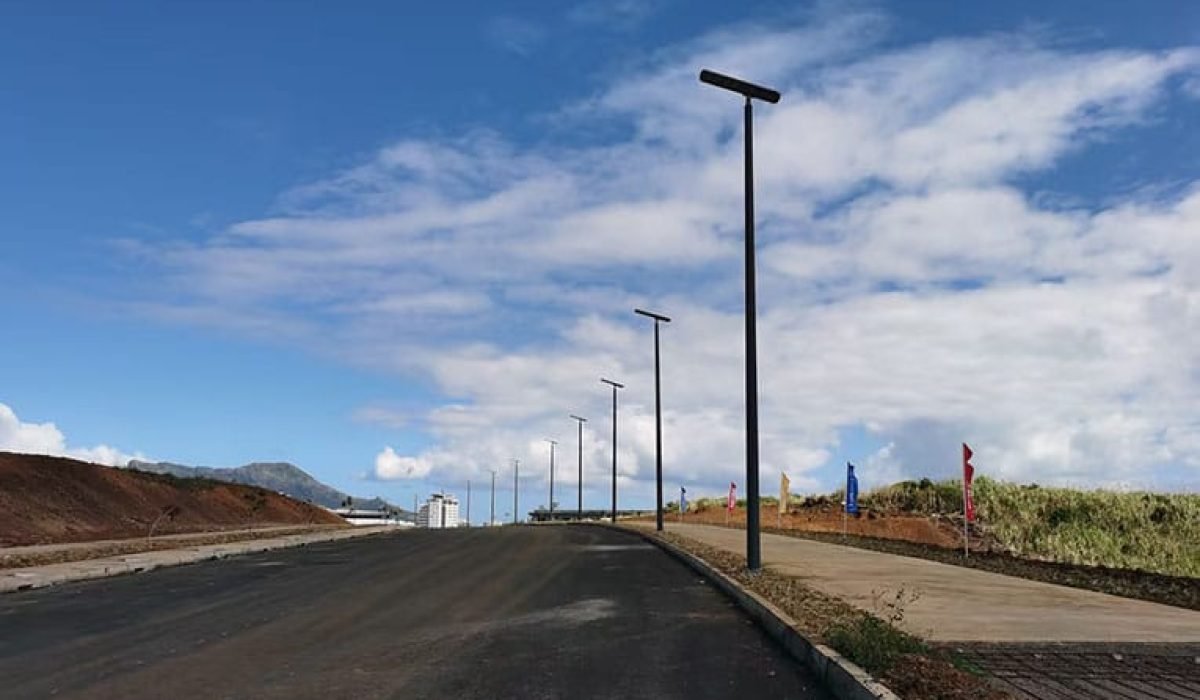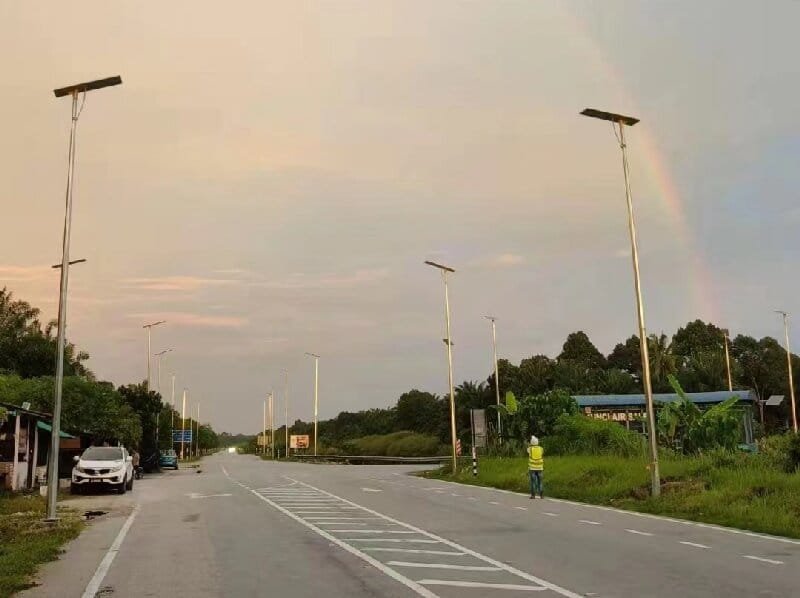Solar street lights are becoming a preferred choice for outdoor lighting due to their energy efficiency, eco-friendliness, and cost-effectiveness. However, choosing the right type can be challenging.
All-in-One (Integrated) Solar Street Lights offer simple installation, lower costs, and better security, making them ideal for urban environments. Split-Type Solar Street Lights provide more flexibility, easier maintenance, and long-term upgradability, making them suitable for large-scale or extreme weather conditions.
This article will compare design, installation, maintenance, cost, and flexibility to help you make an informed decision.
1. Overview of Solar Street Light Types
1.1 What Are All-in-One (Integrated) Solar Street Lights?
All-in-One Solar Street Lights integrate all essential components into a single compact unit, including:
- Solar panel
- Battery
- LED lighting unit
- MPPT solar charge controller
Key Benefits
- Simplified installation – Plug-and-play setup without extra wiring
- Minimal maintenance – Sealed unit prevents dust and water damage
- Cost-effective – Fewer components reduce installation labor
1.2 What Are Split-Type Solar Street Lights?
Split-Type Solar Street Lights consist of separate components:
- Solar panel (mounted separately for better sun exposure)
- LED light (installed on a pole)
- Battery (often mounted in a separate box)
Key Benefits
- More flexibility – Components can be placed separately for efficiency
- Easier maintenance – Individual parts can be repaired or replaced
- Extended lifespan – Independent components reduce overall wear
2. Key Differences Between All-in-One and Split-Type Solar Street Lights
| Feature | All-in-One (Integrated) Solar Street Lights | Split-Type Solar Street Lights |
|---|---|---|
| Installation | Easier and faster (plug-and-play) | More complex (requires wiring and setup of individual components) |
| Maintenance | More challenging (entire unit may need replacement) | Easier (individual components can be replaced separately) |
| Cost | More cost-effective (fewer components and labor) | Higher cost (due to separate parts and installation complexity) |
| Flexibility | Limited (solar panel and battery must stay together) | Greater flexibility (components can be optimized separately) |
| Upgradability | Difficult to upgrade individual parts | Easier to upgrade specific components |
| Aesthetic Appeal | Sleek and compact design | Bulkier, may require additional mounting |
| Security | Lower risk of theft or vandalism | Higher risk (exposed components) |
3. Advantages and Disadvantages of Each Type
✅ Advantages of All-in-One Solar Street Lights
- Simple installation – No complex wiring needed
- Compact design – Sleek and modern, ideal for urban areas
- Lower cost – Requires fewer components and less labor
- Better security – Fewer exposed parts reduce theft risk
❌ Disadvantages of All-in-One Solar Street Lights
- Less flexibility – Fixed positioning of solar panel and battery
- Difficult maintenance – If one part fails, the entire unit may need replacement
- Limited scalability – Upgrading components separately is challenging
✅ Advantages of Split-Type Solar Street Lights
- Flexible component placement – Solar panels can be optimized for better sun exposure
- Easier maintenance – Individual parts can be replaced, reducing downtime
- Upgradability – Components can be upgraded separately, making them more future-proof
- Better performance in extreme conditions – Batteries can be stored in cooler environments for longer lifespan
❌ Disadvantages of Split-Type Solar Street Lights
- More complex installation – Requires wiring and secure placement of each part
- Higher initial cost – More components and labor needed
- Greater security risk – Exposed components are more vulnerable to theft and vandalism
4. Which One Should You Choose?
Choose All-in-One Solar Street Lights If:
- You need quick and easy installation
- You want a sleek, modern design (best for urban environments)
- You have a limited budget and need a cost-effective solution
- You want to reduce the risk of theft and vandalism
Choose Split-Type Solar Street Lights If:
- You need greater flexibility in component placement
- You want easier maintenance and upgradability
- Your project is in a high-temperature area (better battery management)
- You prioritize long-term cost savings and durability
5. Conclusion
- All-in-One Solar Street Lights are the best choice for quick installation, lower cost, and minimal maintenance.
- Split-Type Solar Street Lights provide better flexibility, easier maintenance, and long-term upgradability.
The right choice depends on your budget, maintenance capabilities, security concerns, and location requirements. Always consider long-term costs before making a final decision.




